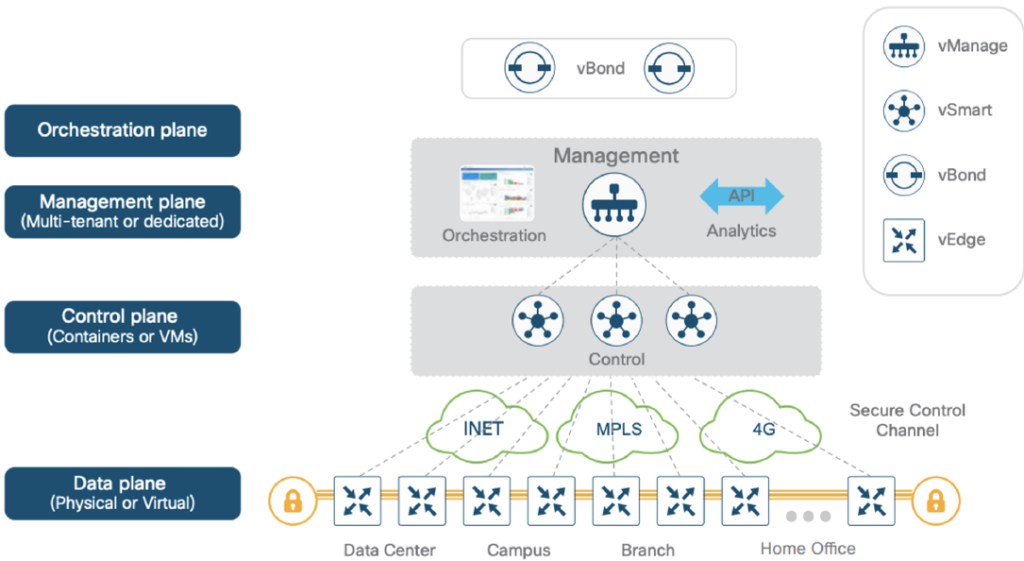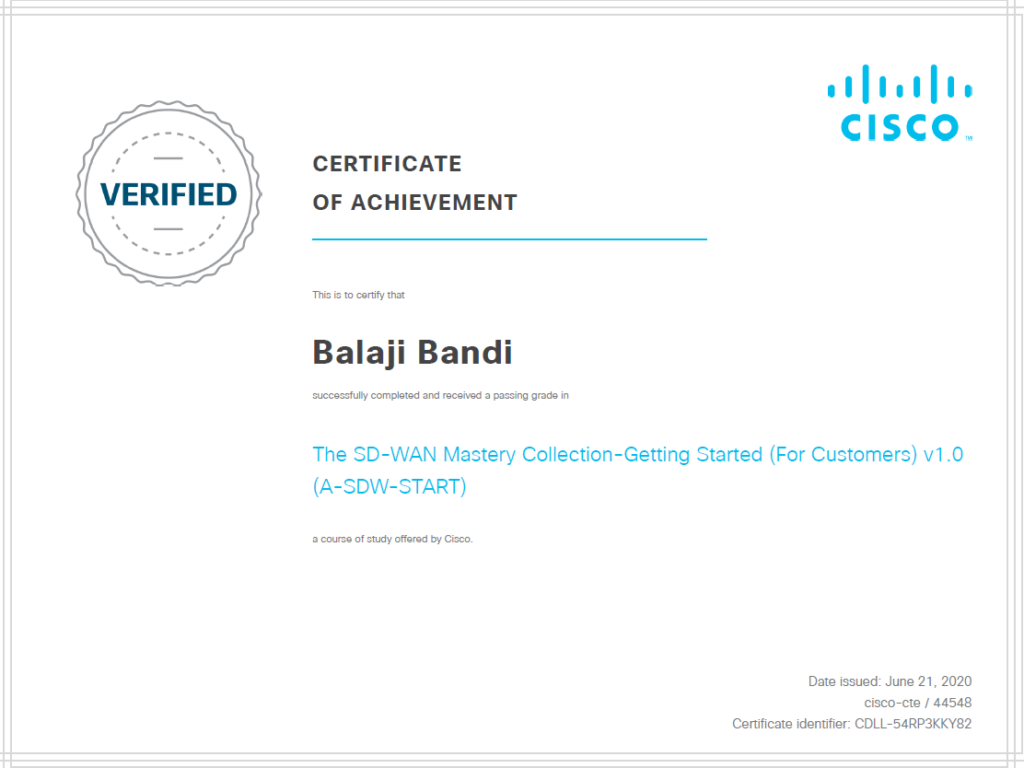Cisco SD-WAN Part of Learning CCIE – Enterprise Infra 1.0


Background and Deployment available :


Components involved example below for on-premises deployment :

High-level SDWAN

Functional Roles :
vBond orchestrator
- Primary authenticator for all SDWAN components
- Facilitates discovery of the control elements by the vEdge routers
- Notifies vEdges of their public IP, if behind NAT.
vManage
- is the network management system, a single pane of glass, for the entire SD-WAN fabric
vSmart controllers
- Distribute reachability and security information between the vEdge routers
- Distribute data and app-route policies from vManage to vEdges. Enforce control policies.
- Perform best-path calculation for non ECMP routes and advertise the best route to the vEdges (second-best too, if configured)
vEdge
- vEdge routers sit at the perimeter of an SD-WAN site and provide connectivity across the fabric.
- vEdge routers handle the transmission of data traffic.
- vEdge routers are offered as a pre-integrated appliance or as a software-only virtual machine for ESXi, KVM, AWS, and Microsoft Azure platforms.

High-level Topology :

Fabric Terminology :
Overlay Management Protocol – Control plane protocol distributing
reachability, security, and policies throughout the fabric
Transport Locator (TLOC) – Transport attachment point and next-hop route attribute
Color – Control plane tag used for IPSec tunnel establishment logic
Site ID – Unique per-site numeric identifier used in the policy application
System IP – Unique per-device (vEdge and controllers) IPv4 notation
identifier. Also used as Router ID for BGP and OSPF.
Organization Name – Overlay identifier common to all elements of the fabric
VPN – Device-level and network-level segmentation.
SD-WAN required clear order of operation to follow and bring up each device ( Very important as shown below).

SD-WAN you can take advantage of any place, any transport.


Next BLOG we start configuring the SD-WAN Lab.
Labs will be coming soon………………happy Labbbbbbbbbbbbbbbbing 🙂